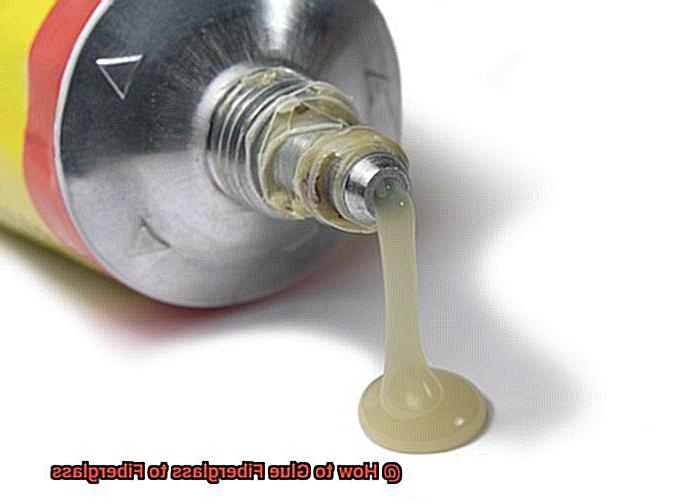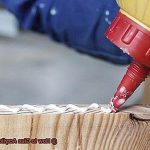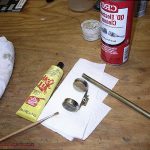Are you looking for the best way to bond two pieces of fiberglass together? You’ve come to the right place! In this blog post, we’ll discuss how to glue fiberglass to fiberglass.
We’ll cover everything from choosing the right adhesive and preparing the surfaces properly, to ensuring a strong bond that will last.
So let’s get started and make sure your next project is a success.
What is Fiberglass?
Contents
- 1 What is Fiberglass?
- 2 Different Types of Glue for Bonding Fiberglass to Fiberglass
- 3 The Benefits and Drawbacks of Using Different Types of Glue
- 4 Preparing the Surface for Glue Application
- 5 Applying the Glue on the Fiberglass
- 6 Curing and Drying Times for Each Type of Glue Used
- 7 Tips and Tricks for Gluing Fiberglass to Fiberglass Successfully
- 8 Common Problems Encountered When Gluing Fiberglass to Fiberglass
- 9 Conclusion
Fiberglass is an incredibly versatile material that can be used in a variety of applications, from boats to cars to airplanes. It’s lightweight yet strong, and its resistance to corrosion makes it a durable choice.
Plus, fiberglass can be cut into intricate shapes and molded into complex forms. And if something ever goes wrong, it’s easy to repair.
Furthermore, when combined with other materials such as resin or epoxy, fiberglass creates an even stronger bond.
Different Types of Glue for Bonding Fiberglass to Fiberglass
Bonding fiberglass to fiberglass requires a reliable adhesive that can withstand the elements and create an incredibly strong bond.
Epoxy is a two-part adhesive that is perfect for wet or dry surfaces, and can be tinted to match the colors of the fiberglass panels.
Polyester resin and acrylic adhesives are also commonly used, both of which are one-part adhesives that create a strong bond when cured. For larger pieces of fiberglass, urethanes are often used as they provide extra strength and flexibility compared to other types of glue.
The Benefits and Drawbacks of Using Different Types of Glue
Choosing the right glue for your project is essential for maximum strength and durability. There are several popular brands of glue to choose from, each with its own advantages and disadvantages.
Epoxy glue is a great choice for gluing fiberglass to fiberglass due to its strength and durability. However, it can be difficult to apply correctly as it requires mixing two components together before use.
Gorilla Glue is waterproof and can fill gaps between surfaces, but when it dries, it expands, which can create a mess if not used carefully.
Liquid nails provide a strong bond and are easy to use, but they have a strong odor that some people may find unpleasant.
No matter which type of glue you choose, make sure you read the instructions carefully before starting your project in order to get the best results.
Preparing the Surface for Glue Application
Creating a strong bond between fiberglass and glue requires careful preparation of the surface. To ensure that your fiberglass is ready for the glue application, follow these simple steps.
Begin by thoroughly cleaning and wiping away any dirt, dust, or debris from the surface. Next, use a quality degreaser to remove any oil or grease.
Then, sand the surface with fine grit sandpaper to create an even and smooth finish. Finally, use a clean cloth or paper towel to wipe away any remaining dust before applying the glue.
Applying the Glue on the Fiberglass
When it comes to bonding fiberglass pieces together, applying glue is a critical part of the process.
Whether you use a brush or roller, it’s essential to spread the glue evenly over the entire surface of the fiberglass.

If you’re using a brush, make sure it has soft bristles so you don’t damage the fiberglass. After applying the glue, wait at least 15 minutes before gluing the fiberglass pieces together; this gives time for proper adhesion.

When bonding two pieces of fiberglass together, ensure they are aligned correctly and there are no gaps between them.
Curing and Drying Times for Each Type of Glue Used
When you need to glue fiberglass to fiberglass, it’s essential to know the curing and drying times for each type of glue.
Epoxy resin takes 24 hours to cure, while polyester resin takes 48 hours.
Gorilla glue usually cures within 24 hours, although it can take up to 48 hours depending on the environment.
Liquid Nails has a drying time of around 24 hours, but this can vary depending on the temperature and humidity levels in the room.
It is critical to allow enough time for the glue to dry and cure before placing any pressure or weight on the glued area. This will ensure that your project is strong and secure.
Tips and Tricks for Gluing Fiberglass to Fiberglass Successfully
Gluing fiberglass can be tricky, but it doesn’t have to be a daunting task. With the right tips and tricks, you can successfully bond fiberglass and make your project a success. Here are some essential steps for gluing fiberglass to fiberglass:
- To begin, use an adhesive made specifically for bonding fiberglass. Epoxy is the best choice for this type of bonding as it will provide a strong and durable bond between the two pieces of fiberglass. Before gluing, sand down any rough edges or uneven surfaces on the fiberglass with a high-quality sandpaper.This will help ensure that the two pieces of fiberglass form a secure bond when glued together.
- Clean both surfaces with rubbing alcohol before applying the adhesive to remove any dirt, dust, or residue that could prevent the glue from sticking properly.
- Apply an even and generous amount of glue to both surfaces and press them together firmly for a few seconds to ensure a strong bond between them.
- Use clamps or weights to hold the pieces together while drying in order to keep them in place until the glue cures completely.
- Wear protective gear such as gloves and goggles when handling fiberglass and glue in order to protect yourself from any potential hazards associated with these materials.
- Lastly, allow plenty of time for the glue to dry completely before using or handling the fiberglass item again; at least 24 hours is recommended for optimal results.
Common Problems Encountered When Gluing Fiberglass to Fiberglass
Gluing fiberglass to fiberglass can be a tricky task, and it’s important to know the common problems that can arise during this process.
Poor adhesion is one of the most frequent issues when bonding two pieces of fiberglass together. This happens when the glue doesn’t adhere properly, leading to a weak bond. An uneven application of the glue can also be a problem, as it can cause weak spots in the bond.
Applying too little pressure when gluing the two pieces of fiberglass together can result in air pockets forming between them, which would weaken the bond.
Poor surface preparation is another factor that could lead to problems, since any dirt or debris on the surface will prevent a strong bond from developing.
Additionally, using an incorrect type of glue for this job can cause issues, as some brands may not be suitable for bonding two pieces of fiberglass.
Conclusion
Gluing fiberglass to fiberglass is a tricky task that requires careful planning and the right adhesive. Follow the eight steps outlined in this blog post, and you can be sure your bond will be strong and long-lasting.
Start by selecting an appropriate adhesive; epoxy is ideal for wet or dry surfaces, while polyester resin and acrylic adhesives provide a secure hold when cured.
Prepare the fiberglass surface with sandpaper to ensure a smooth finish before evenly spreading glue on both pieces. Firmly press them together and use clamps or weights to maintain the bond until it has dried.
Always wear protective gear, such as gloves and goggles, when handling fiberglass and glue.s





